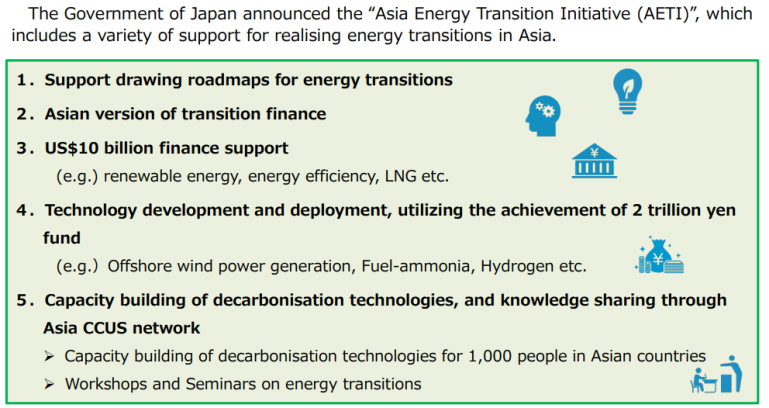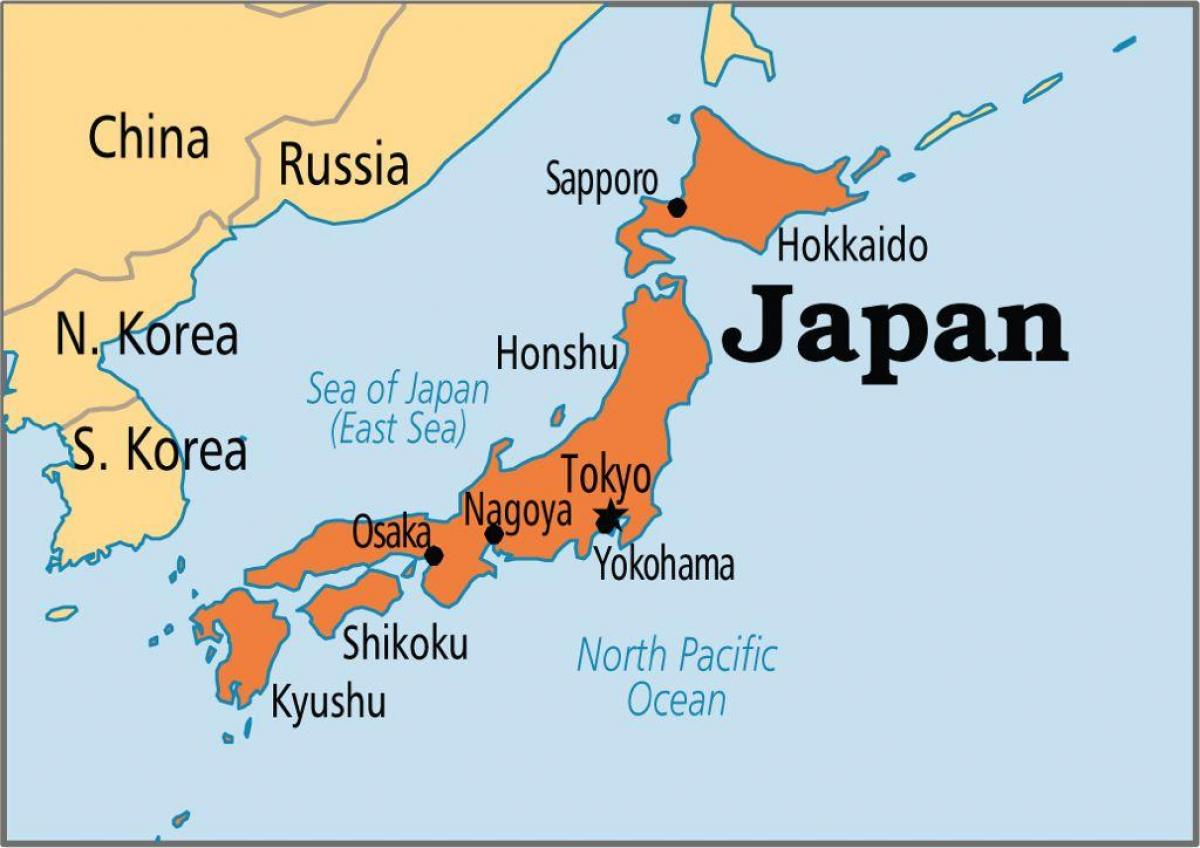International Relations
Japan's Asia Energy Transition Initiative
- 04 Mar 2023
- 5 min read
For Prelims: Japan's Asia Energy Transition Initiative (AETI), Association of SouthEast Asian Nations (ASEAN), India-Japan Energy Dialogue, Lifestyle for Environment (LiFE), Green hydrogen, Dharma Guardian, Malabar, MILAN, India’s Western Dedicated Freight Corridor (DFC).
For Mains: Clean Energy Transition, Status of India Japan Bilateral Relations.
Why in News?
Japan looks forward to supporting India’s clean energy transition by including India in the Asia Energy Transition Initiative (AETI).
- Japan’s AETI, launched in 2021, initially supported the Association of South East Asian Nations (ASEAN) countries towards achieving net zero emissions, including financial assistance of USD 10 billion for renewable energy.
What is Asia Energy Transition Initiative?
What are the Major Highlights of India Japan Clean Energy Cooperation?
- The Clean Energy Partnership between India and Japan was published in March 2022.
- It would work on the agenda covered in the India-Japan Energy Dialogue 2007 and will subsequently expand into areas of mutual benefit.
- India and Japan have taken over the presidentship of G20 and G7, respectively.
- In the context of environmental sustainability, India's Lifestyle for Environment (LiFE) is one of the most important priorities during the G20 presidency.
- Also, the Feed-in Premium (FiP) scheme by the government of Japan was implemented in April 2022 and is expected to improve the country's energy transition.
- Japan has set a goal of becoming net-zero by 2050, and the government issued an interim report on Clean Energy Strategy in May 2022.
- India has also set an ambitious target of achieving net-zero emissions by 2070.
- The Indian subcontinent's massive renewable energy potential can boost green hydrogen (GH2) production and immense potential for a GH2 economy.
- Nepal and Bhutan also have surplus hydropower potential, and green hydrogen electrolyzers can tap this in countries like India and Bangladesh.
- Events like the India-Japan Environment week would help create a roadmap to integrate variable renewable energy into the system through technological, institutional, and personnel cooperation.
What is Clean Energy Transition?
- About:
- Clean energy transition refers to the shift from traditional, fossil fuel-based energy sources (such as coal, oil, and natural gas) to cleaner, more sustainable sources of energy that have a lower impact on the environment.
- This transition is driven by the need to reduce greenhouse gas emissions, mitigate the effects of climate change, and address other environmental and public health concerns associated with the use of fossil fuels.
- Clean Energy Sources:
- Clean energy sources include renewable energy sources like solar, wind, hydro, geothermal, and biomass energy, as well as energy storage technologies like batteries and hydrogen fuel cells.
What is the Status of India -Japan Bilateral Relations?
- Defense Ties: India-Japan Defence and Security partnership has evolved over the years from bilateral and multilateral exercises including Dharma Guardian and Malabar respectively. And welcoming the participation of Japan for the first time in the MILAN exercise.
- Health-Care: In view of the similarities and synergies between the goals and objectives of India's AYUSHMAN Bharat Programme and Japan’s AHWIN, both sides had been consulting with each other to identify projects to build the narrative of AHWIN for AYUSHMAN Bharat.
- Investment and ODA: India has been the largest recipient of the Japanese Official Development Assistance(ODA) Loan for the past decades. Delhi Metro is one of the most successful examples of Japanese cooperation through the utilization of ODA.
- India’s Western Dedicated Freight Corridor (DFC) project is funded by a soft loan provided by Japan International Cooperation Agency under Special terms for economic partnership (STEP).
UPSC Civil Services Examination Previous Year Question (PYQ)
Q. A present group of nations known as G-8 started first as G-7. Which one among the following was not one of them? (2009)
(a) Canada
(b) Italy
(c) Japan
(d) Russia
Ans: (d)









